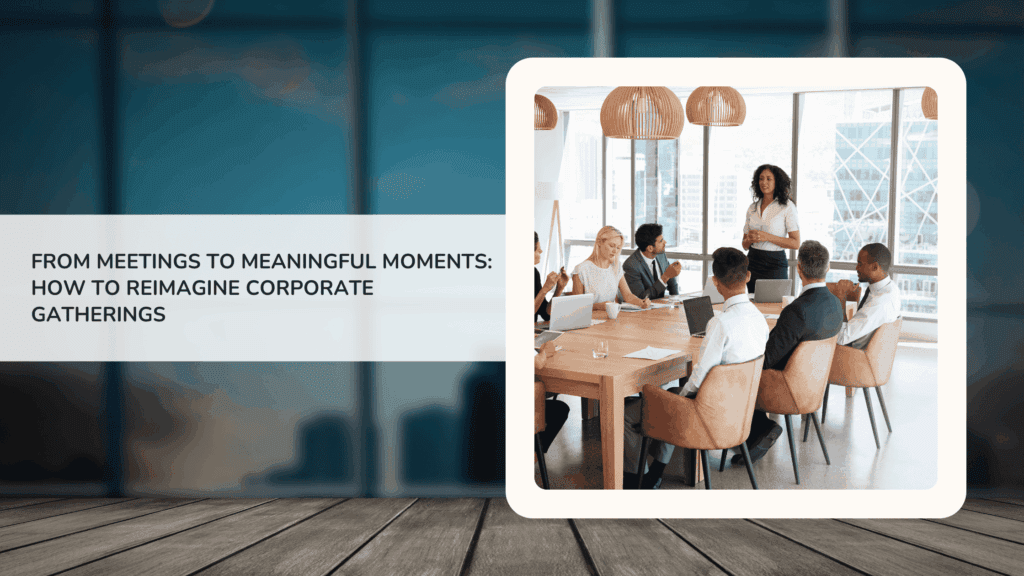Professional Development expert Lyndon Friesen explores the hidden cost of over-collaboration in modern workplaces, unpacking why our well-intentioned habits may be derailing team performance.
Written by Lyndon Friesen, who leads our Professional Development arm of Outback Team Building, called Ignitor. Over the past 10 years, Lyndon and his skilled team of Facilitators have led over 800 different learning and development events for over 500 different organizations across North America.

Once upon a time, “collaboration” was a buzzword that symbolized progress. It was the antidote to silos, the promise of shared innovation, and the glue of remote work.
But somewhere along the way, we took it too far.
We don’t just collaborate when it’s needed—we collaborate constantly.
And it’s starting to cost us.
The Collaboration Crisis Nobody Wants to Talk About
In the past decade, collaborative work has exploded. According to a 2024 article in Harvard Business Review, people now spend 50% more time in meetings, shared work, and communications than they did just ten years ago.
That’s more than one extra hour per day per employee spent collaborating—and less time doing the actual work they were hired to do.
And for what?
Meetings are packed with attendees who don’t need to be there. Slack channels are buzzing with irrelevant threads. Decision-making processes are bogged down by the pursuit of consensus.
This isn’t collaboration. It’s confusion and inefficiency—and it’s slowly grinding your teams to a halt.
Collaboration Was the Solution Until It Became the Problem
To be clear, collaboration isn’t the villain. The way we’ve come to define and deploy it is.
When the pandemic hit, everything shifted. Suddenly, teams were distributed across geographies.
Remote work became the norm. Cross-functional coordination was more critical—and more difficult—than ever.
So, we compensated the only way we knew how: by trying to involve everyone in everything.
The intention was good, but the outcome was less so.
We created a culture of hyper-collaboration—one where presence was confused for contribution, meetings multiplied without purpose, and speed slowed to a crawl because nobody knew who was supposed to do what or who was even allowed to decide.
It’s Time to Unlearn What You Think Collaboration Means
The over-collaboration problem begins with how we define the idea of collaborating.
Ask ten people what collaboration means, and you’ll get ten different answers. Some think it means ideation. Others think it’s a decision-making process. Some use it synonymously with consensus. Many simply think it means: “include everyone.”
Here’s how I define it:
Collaboration is the free and intentional exchange of expertise—when leveraging someone else’s background, skills, or experience helps you produce a stronger outcome than you could on your own.
That’s it. Simple, strategic, and specific.
It doesn’t mean you’re looped into every conversation. It doesn’t mean you’re CC’d on every email. And it doesn’t mean you’re required to have an opinion on things outside your area of expertise.
The moment we lose sight of that definition is the moment collaboration turns from helpful to harmful.
What Over-Collaboration Looks Like in Practice
Let’s say you’re working on a new marketing initiative. You loop in people from sales, product, legal, and HR—just to be safe.
Before long, your planning meeting has 10+ people attending, half of whom are unsure why they’re there or what they can contribute.
Now you’re stuck in the loop: ideate, revise, circle back.
Decisions stall. Execution slows. And the people who could have been doing meaningful work? They’re sitting in rooms, waiting for their turn to add value—or worse, pretending to when they have none to share in that context.
We’ve created workplaces where people are collaborating more and accomplishing less.
As this Fast Company article outlines, over-collaboration leads to “collaboration overload.”
It’s a real contributor to burnout, disengagement, and decreased productivity. We think we’re building culture, but we’re actually building friction.
3 Ways to Redefine Collaboration in Your Workplace
If you’re ready to break the cycle, you don’t need a cultural overhaul. You just need clarity.
Here’s how to start.
1. Define What Collaboration Really Means to Your Team
Words like “collaboration” and “empowerment” mean nothing if your team can’t tell you what they look like in action.
Start by asking the following question:
When we say “collaborate,” what do we mean?
A good working definition might sound like this:
“We collaborate when one person’s subject matter expertise can strengthen another’s work, and both parties are aware of what they’re contributing and why.”
From there, apply the definition with intention. Don’t default to including more people—default to including the right people.
If you’re not sure who those people are, that leads us to step two.
2. Map Out the Expertise on Your Team
In my Professional Development sessions, I run an exercise called “Who Am I?”
It’s deceptively simple.
Each person answers a series of questions to define their own subject matter expertise—then shares that with the group.
You’d be surprised how many people don’t actually know what their colleagues are experts in.
If I don’t know what someone does well, I can’t ask for their input. If they don’t know what I bring to the table, they can’t use my skills either.
That’s why most collaboration falls flat. We’re trying to build together without knowing what tools we have to work with.
If you want your teams to collaborate effectively, they need visibility into each other’s strengths.
Document it. Share it. Use it.
That’s the foundation of strategic collaboration.
3. Clarify Who Has the Authority to Decide
Let me be blunt: collaboration is not a decision-making process.
You can collaborate during ideation. You can collaborate to get input. But someone needs to own the final call.
Too often, we mask indecision as collaboration. We sit in meetings, waiting for consensus. Nine people agree, one doesn’t, so we spin in circles until everyone does—or until everyone gives up.
That’s not trust. That’s chaos.
Empower your people by defining who gets to decide what. Trust them and give them the authority to act on their expertise.
If a content writer is responsible for producing a blog post, they should own the direction of that post—whether or not everyone agrees with the tone or headline.
Let your experts lead within their domain. That’s real collaboration. That’s trust in action.
Collaborative Magic: What Happens When We Get It Right
When collaboration is intentional, not habitual, the benefits are obvious:
- Meetings get smaller and more effective
- Decision-making speeds up
- People have more time to do their actual jobs
- Subject matter experts are empowered to contribute where they’re needed most
- Teams move faster and more confidently toward shared outcomes
And—ironically—it becomes easier to build real trust, because people feel seen and respected for what they uniquely bring to the table.
Actionable Ways to Fix Your Collaboration Problem
If this sounds like your organization, you’re not alone. But change doesn’t happen just by knowing the problem exists. You need practical strategies, shared understanding, and a space for your team to learn how to collaborate better.
If you’d like to dive into the root causes behind over-collaboration and support your team in becoming more productive and efficient, you might want to start by focusing on:
- Clear Communication: Help your team develop verbal, written, and non-verbal communication skills that clarify—not clutter—collaborative work.
- Confident Decision-Making: Equip your team with tools to make faster, smarter, and more accountable decisions—even when consensus isn’t possible.
- Positive Team Dynamics: Get people working together with clear roles, defined strengths, and trust in each other’s contributions.
- Practical Time Management: Reinforce the importance of protecting time and being thoughtful about where collaboration truly adds value.
Collaboration is powerful—but only when used correctly. We don’t need more meetings. We need more clarity, trust, and respect for each other’s expertise.
So, the next time you’re tempted to invite everyone into the conversation, ask yourself this: do I want more voices—or the right ones?
Choose wisely. Your people—and your company’s performance—depend on it.
Harness the power of professional development.
Get in touch with our Employee Engagement Consultants today to learn about Professional Development sessions that support stronger, more cohesive teams.



